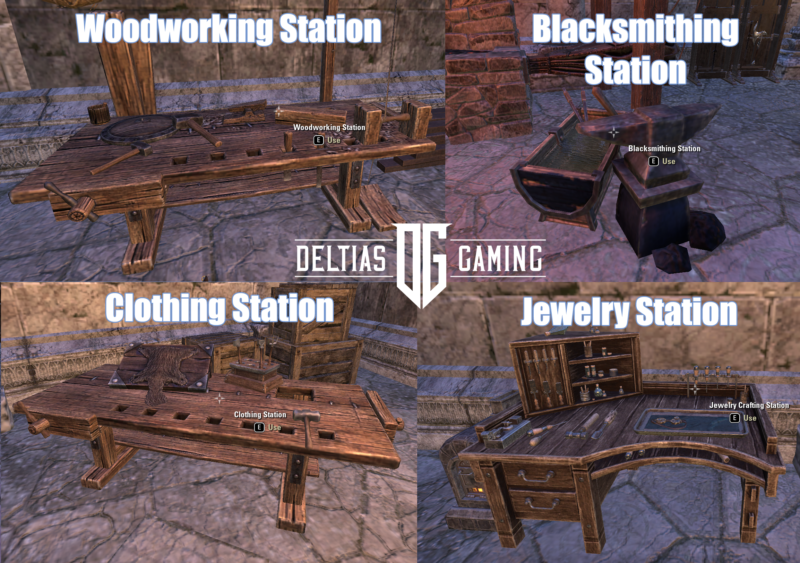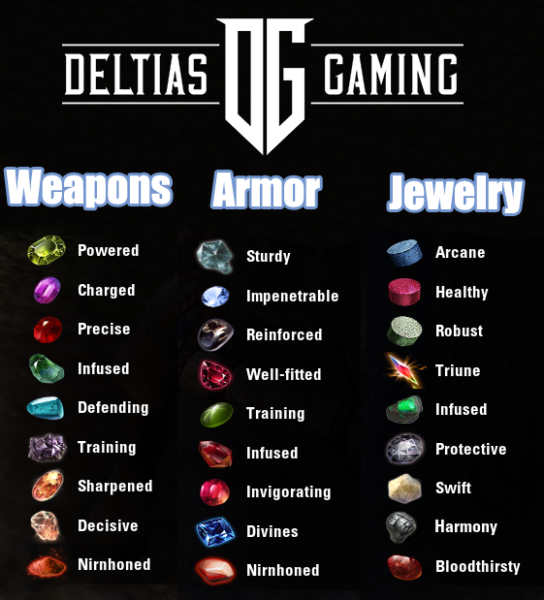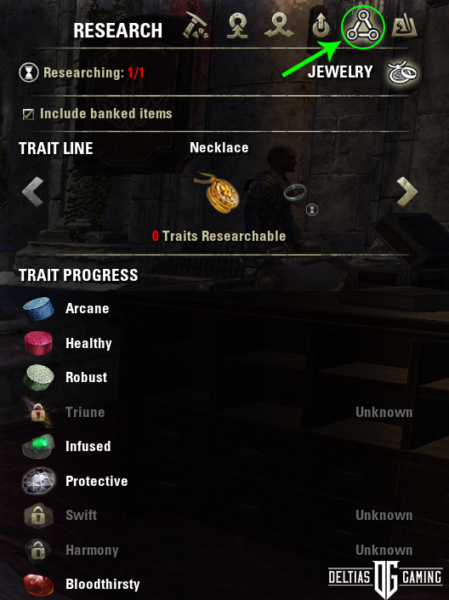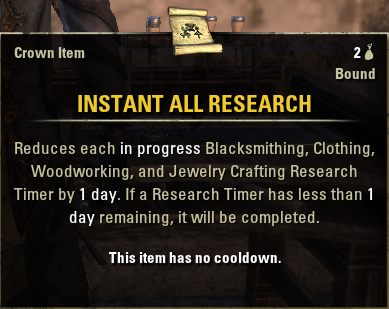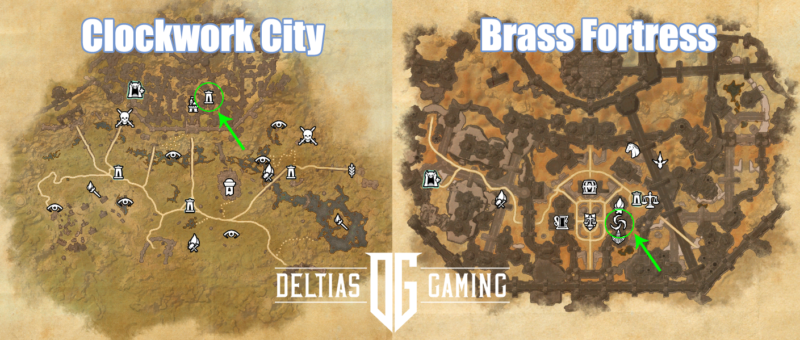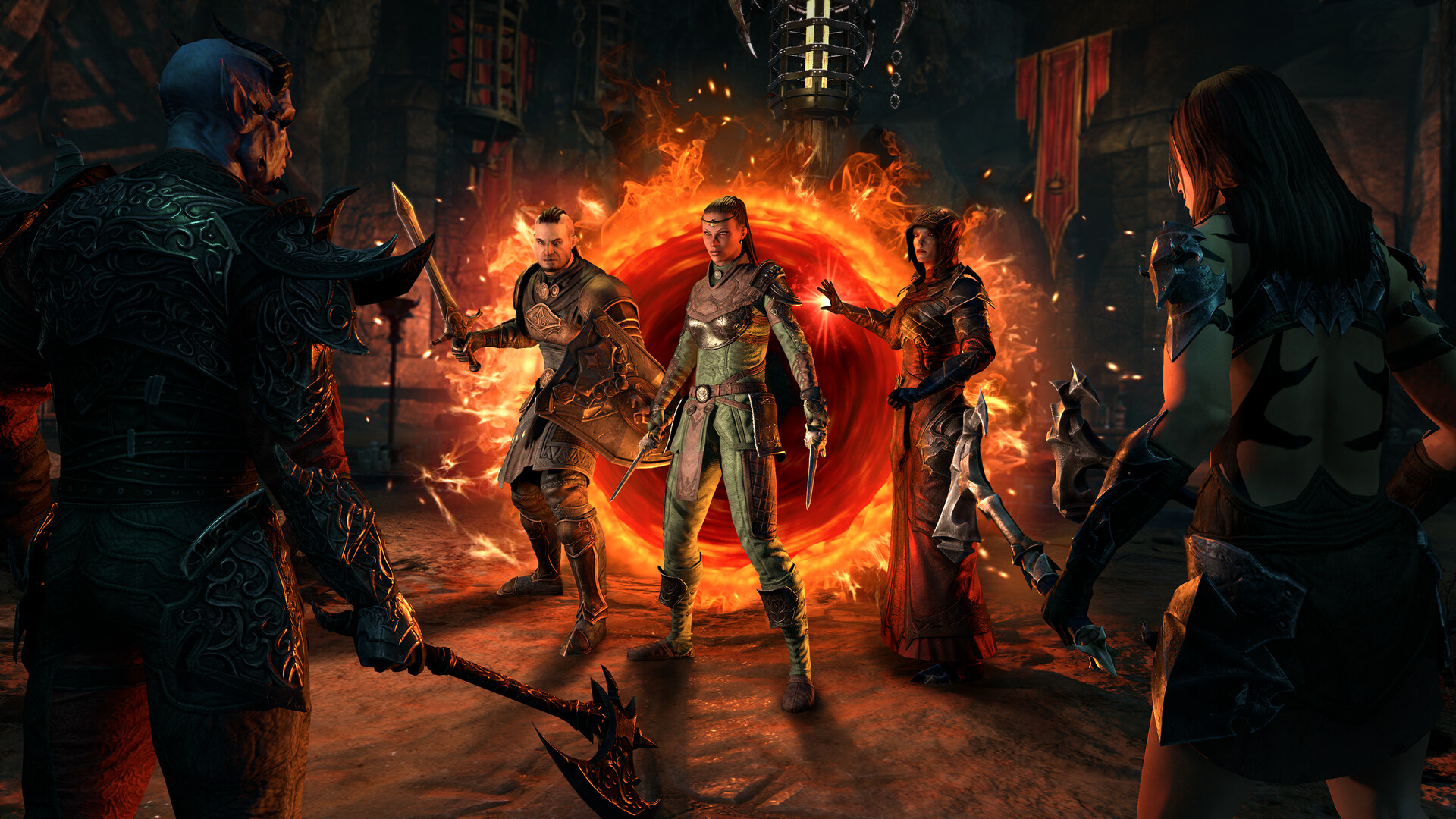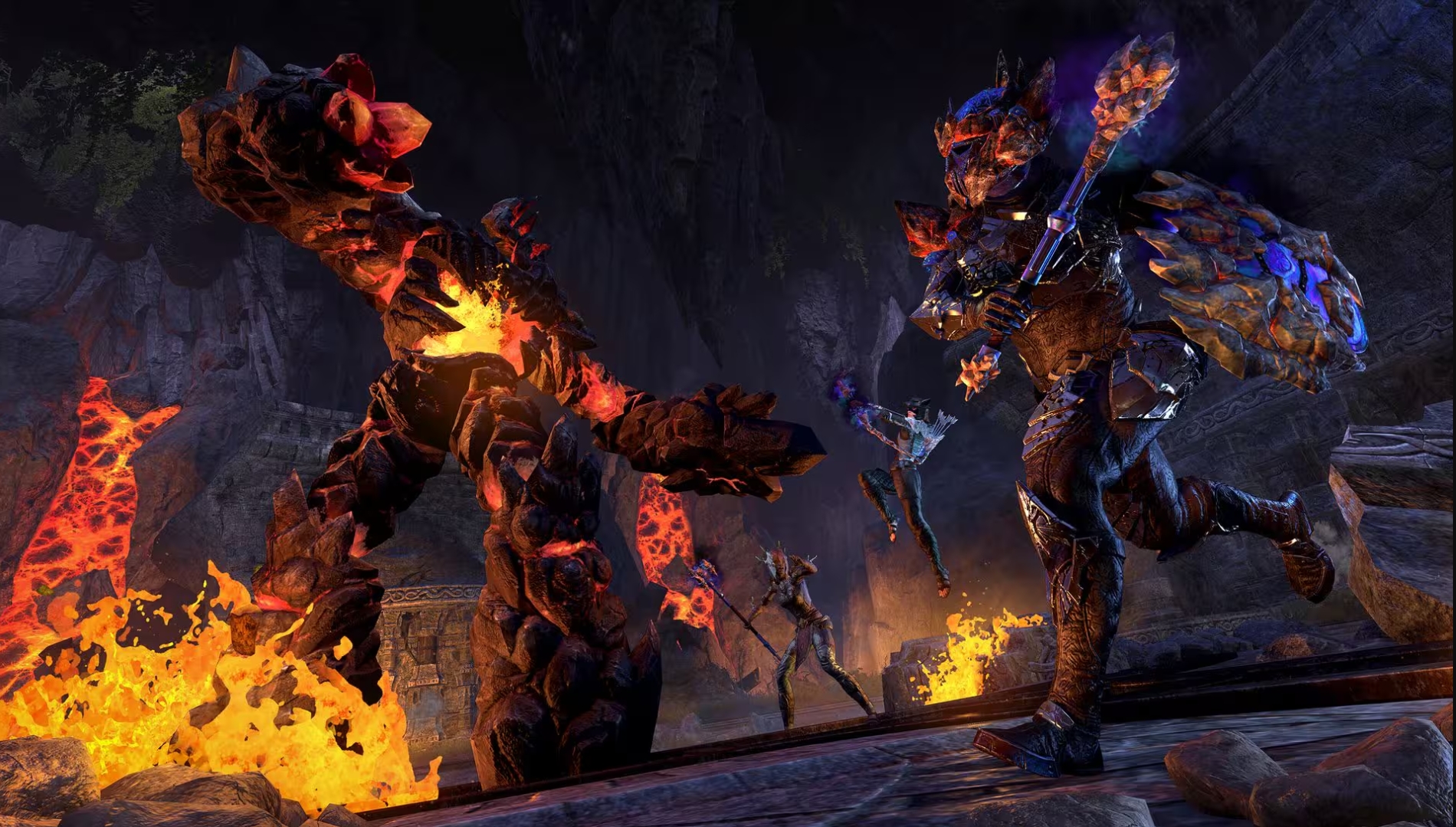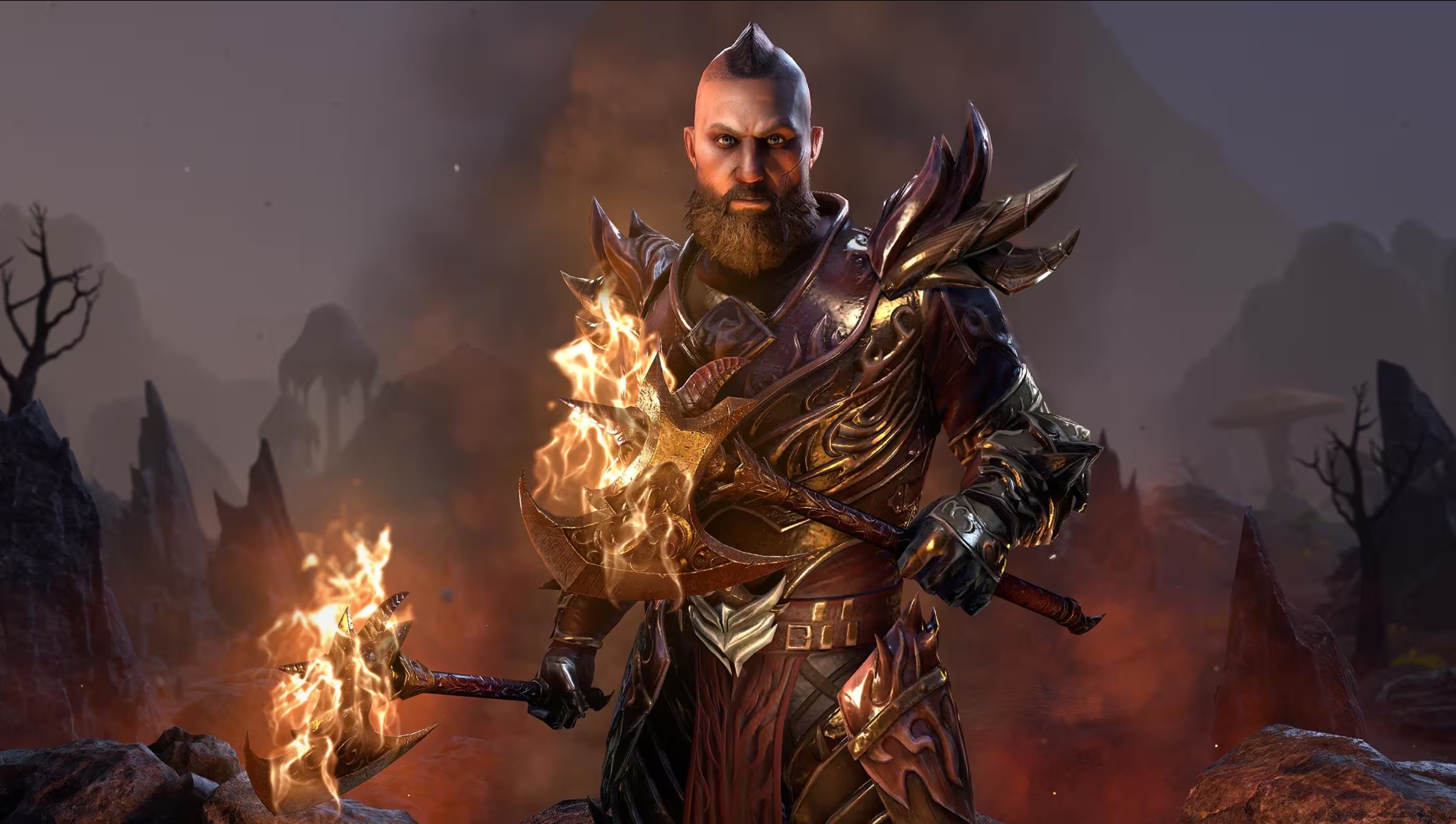The ESO Crafting Trait Research Guide is in-depth look at crafting and a step-by-step guide for the most efficient way to level your crafter!
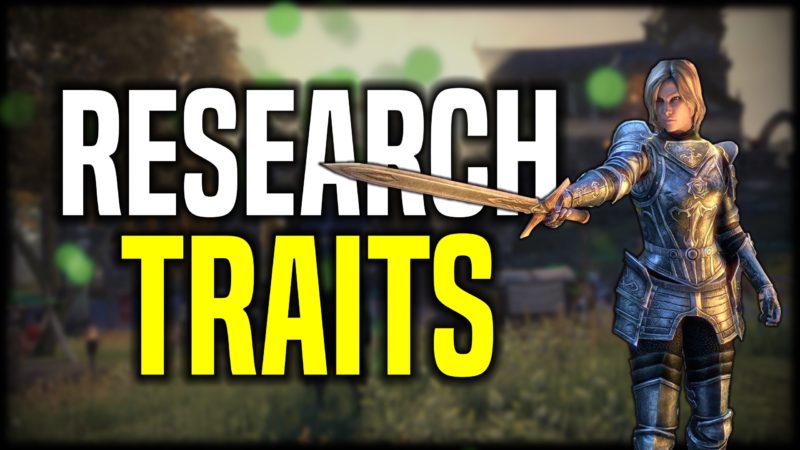
Learning how to craft and figuring out traits in the Elder Scrolls Online can be a complex and intimidating prospect for new players, and my ESO Crafting Trait Research Guide is here to help! Is leveling all those crafting lines really worth all the trouble? While craftable armor sets are usually not what high-level, end game players are running, there are craftable sets which are still very useful in the base game and can serve as perfectly viable stand-ins as you collect the more powerful gear. In addition, you’ll have the ability to improve any overland or guild store purchased gear on your own. And as you level your crafting skill lines you can get certified for Crafting Writs – one of the most effective ways to help progress your account and earn gold.
Though it does require a time investment, crafting can absolutely pay back with dividends in the long run. With this ESO Crafting Trait Research Guide I’ll provide you with an in-depth look at crafting and a step-by-step guide for the most efficient way to level your crafter!
Crafting in ESO
The Elder Scrolls Online has 7 different crafting skill lines:
- Blacksmithing (Heavy armor and metal weapons)
- Clothing (Medium and Light armors)
- Woodworking (Shields, bows, and all 4 staff types)
- Jewelry (Necklaces and rings)
- Alchemy (Potions and poisons)
- Provisioning (Food and drinks)
- Enchanting (Glyphs)
The fastest way to level the four lines of Equipment crafting (blacksmithing, clothing, woodworking and jewelry) is by deconstructing all of the unneeded overland armor pieces you collect as you play the game. You can deconstruct gear in towns and at crafting stations throughout the zones – each skill will have its own crafting table for you to work at.
Equipment pieces come in five different levels of improvement:
- White
- Fine
- Superior
- Epic
- Legendary
The higher the quality of the gear, the more experience (in ESO, also called Inspiration) you will earn as you deconstruct. In addition, as you level the skill lines and put points into the passives your character will be able to get some raw materials, trait stones, and even improvement materials back when deconstructing an item.
You can also level your crafting skills by constructing items. However, this typically does not give as much experience points as deconstruction will. And don’t bother to craft your own items and then turn around and deconstruct them – the game accounts for this kind of farming idea and the experience returns are not worth it. However, if you have another player/friend to partner up with you can both craft items, swap them in trade, and then deconstruct your friend’s items. This will get you a normal amount of experience. This takes a whole lot of raw materials and time, however. Unless you are leveling the Enchanting skill line it’s a much better time investment to simply play the game and then deconstruct the overland gear you pick up.
Trait Research
What are traits in the Elder Scrolls Online? Traits can be added to pieces of armor, weapons, and jewelry in order to create certain desired effects. There are 9 different traits for each of the three types of equipment. As crafting materials, in ESO the traits are typically represented by certain precious stones. In addition, the effectiveness of the applied trait will grow if you improve the quality of the armor.
Each different type of wearable has its own set of traits. These are:
Researching traits is also what unlocks all of the game’s craftable sets. Different sets will require different amounts of unlocked traits in order for you to craft pieces from the set. For example, the Order’s Wrath set requires that you have three traits discovered, while the New Moon Acolyte set requires all nine! Keep in mind that this does not mean that you have to have every single trait discovered for every single piece of equipment before you can craft New Moon Acolyte. BUT, you must have all nine traits researched for whatever specific pieces you need – whether that’s a one two-handed sword and three jewelry pieces or perhaps five body pieces (chest, legs, arms, boots, waist).
Weapons:
- Powered: Increases Healing done
- Charged: Increases chance to apply Status Effects
- Precise: Increases Weapon and Spell Critical values
- Infused: Increases Weapon Enchantment effect
- Defending: Increases total Physical and Spell Resistance
- Training: Increases Experience gained from kills
- Sharpened: Increases Armor and Spell Penetration
- Decisive: Chance to gain 1 additional Ultimate anytime that Ultimate is gained
- Nirnhoned: Increases Weapon Damage (does not count double for two-handed)
Armor:
- Sturdy: Reduces Block Cost
- Impenetrable: Reduces item’s durability damage by 50% and increases Critical Resistance
- Reinforced: Increases Armor
- Well-fitted: Reduces the cost of Sprinting and Roll Dodge
- Training: Increases Experience gained from kills
- Infused: Increase Armor Enchantment effects
- Invigorating: Increases Magicka, Stamina and Health Recovery
- Divines: Increases Mundus Stone Effects
- Nirnhoned: Increases Spell and Physical Resistance
Jewelry
- Arcane: Increases Maximum Magicka
- Healthy: Increases Maximum Health
- Robust: Increases Maximum Stamina
- Triune: Increases Health, Magicka and Stamina
- Infused: Increases Jewelry enchantment effectiveness
- Protective: Increases Spell and Physical Resistance
- Swift: Increases Movement Speed
- Harmony: Increases Damage, Healing, Resource Restore and Damage Shield strength of synergies you activate
- Bloodthirsty: Increases damage against enemies under 25% Health
Research Times
Discovering each trait through research at the crafting stations is really what requires the biggest time sink. First, you will need to have a piece of equipment with the trait you want to research. Next, visit the corresponding crafting station to that item. Click on the Research Icon from the crafting interface which opens up on the right-hand side. From there the window will show you all of the equipment pieces for the skill line, what traits you have researched, what traits you haven’t, and which items in your inventory have traits you can use for new discovery.
As you research and unlock each trait, the time it takes to learn the next new one will increase. Those times add up quite quickly and by the end of nine traits you will have spent at least a total of 3066 hours, or 128 days to completely research all of them in a single line!
- 6 hours
- 12 hours
- 24 hours
- 48 hours
- 96 hours (4 days)
- 192 hours (8 days)
- 384 hours (16 days)
- 768 hours (32 days)
- 1536 hours (64 days)
Note that these times shown are attainable only by taking the passive in the skill lines which shorten research time by a max of 25%. In the Blacksmithing skill, put points into Metallurgy, in Clothing you’ll want Stitching, in Woodworking look for Carpentry, and in Jewelry Crafting put points into Lapidary Research.
Another way to shorten times is to use Instant Research Scrolls. There are scrolls for each of the individual crafting skill lines, but the most valuable is the Instant All Research scroll, which will lower the time on all of your currently ongoing research at ALL crafting stations at once. These scrolls are available through the crown store but are also sometimes given away for free as a Daily Login Reward. Keep your eyes out for them!
Trait Research Priority
The order you research your traits in is very important. Because the final traits take so very long to unlock, you don’t want to save the most useful for last.
These lists are not hard and fast rules. They can be swapped around, depending on how you want to play the game. If you’re aiming to play a tank, then the Defending trait on weapons, Reinforced and/or Sturdy traits on armor, and Triune and/or Protective traits on the jewelry line could be more important and moved up in the list.
Weapons:
- Precise: Increases Weapon and Spell Critical values – best-in-slot damage trait in PvE damage dealer
- Training: Increases Experience gained from kills – Handy trait when crafting gear for leveling alts
- Sharpened: Increases Armor and Spell Penetration – a great PvP weapon trait with good damage in solo PvE
- Charged: Increases chance to apply Status Effects – best “off” hand trait when playing dual wield also great in PvP
- Infused: Increases Weapon Enchantment effect – back bar damage dealer preferred trait with berserker enchant
- Powered: Increases Healing done – A higher priority trait for those playing healers along with PvP back bar
- Nirnhoned: Increases Weapon Damage (does not count double for two-handed) – great all-around damage trait in PvE and PvP
- Defending: Increases total Physical and Spell Resistance – used in PvP and decent tank trait
- Decisive: Chance to gain 1 additional Ultimate anytime that Ultimate is gained – niche tank and PvP trait
Armor:
- Divines: Increases Mundus Stone Effects – applicable in nearly every build
- Training: Increases Experience gained from kills – Handy trait when crafting gear for leveling alts
- Infused: Increase Armor Enchantment effects – great large stat trait on “large” piece, legs, chest and head, gives more value
- Well-fitted: Reduces the cost of Sprinting and Roll Dodge – amazing PvP trait regardless of the build
- Sturdy: Reduces Block Cost – great for tanks in PvE or any build using blocking frequently
- Impenetrable: Reduces item’s durability damage by 50% and increases Critical Resistance – PvP specific trait though we prefer Well-fitted
- Reinforced: Increases Armor – awesome trait, especially combined with chest for huge armor boost
- Nirnhoned: Increases Spell and Physical Resistance – niche traits rarely used
- Invigorating: Increases Magicka, Stamina and Health Recovery – odd trait that gives little value especially when you can use divines and a mundus stone
Jewelry
- Infused: Increases Jewelry enchantment effectiveness – all around my preferred trait in PvE and PvP with use in every application
- Bloodthirsty: Increases damage against enemies under 25% Health – considered best in slot for PvE end game
- Swift: Increases Movement Speed – an amazing PvP trait that makes any character and build extremely fast with 2x jewelry pieces
- Healthy: Increases Maximum Health – a decent all-around trait that can apply to any type of character
- Triune: Increases Health, Magicka and Stamina – an amazing tanking trait with some decent application in PvP
- Arcane: Increases Maximum Magicka – specific to magicka builds which is why its lower on the list
- Robust: Increases Maximum Stamina – specific to stamina builds which is why its lower on the list
- Harmony: Increases Damage, Healing, Resource Restore and Damage Shield strength of synergies you activate – considered best in slot for PvP builds focused on synergy, very niche but powerful
- Protective: Increases Spell and Physical Resistance – niche tanking trait rarely used
Transmutation
Transmutation stations, which allow you to reconstruct armor and/or change the trait on a piece of equipment, became available with the Clockwork City DLC. You’ll need that DLC or ESO+ to access the main Transmutation location in Clockwork City or have access to a friend’s home or guild house which has a smaller furnishing version (but with all the same functions) of the same station.
Crafting Writs
Crafting Writs in the Elder Scrolls Online are some of the simplest and most effective ways to help progress your account, earn gold and amass a massive amount of materials! Now that you’ve gotten started with your Equipment crafting and trait research, take a look at our full written Crafting Writs Guide for more information on how to take advantage of those dailies!
Looking For More About ESO?
Thank you for reading ESO Crafting Trait Research Guide. We provide the latest news and create guides for ESO. Also, watch me play games on Twitch or visit my YouTube channel!
 Reddit
Reddit
 Email
Email
